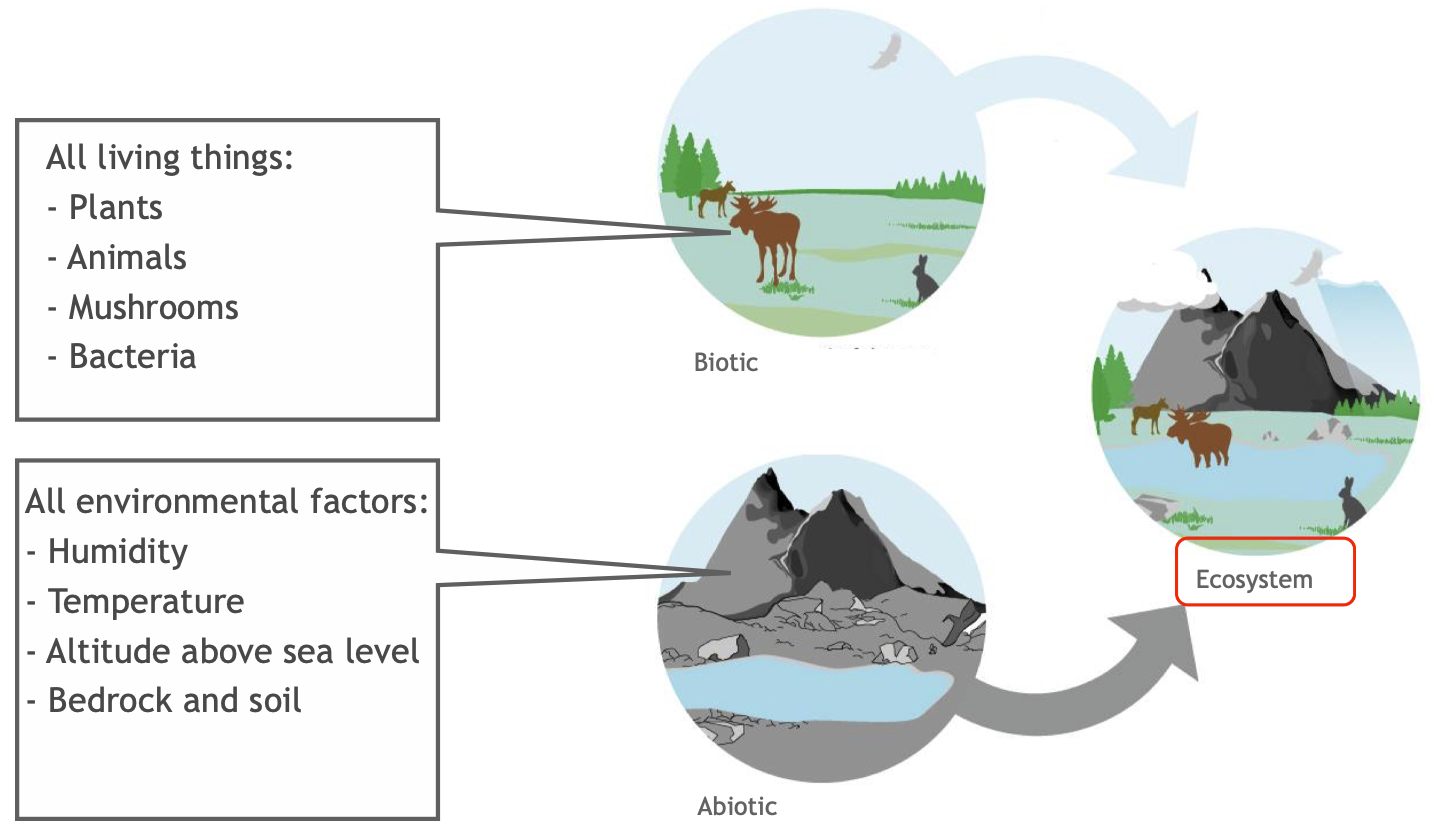This is how it works if you want to continue on another device
To save your progress if you want to continue on another device, there are several options. Copy or email a link, or read provided QR-code.
When you started the course, you will be able to continue on another device.
-
Read QR-code
Scan the following QR-code with your phone to continue where you left.
-
Copied
- Or email the link to yourself
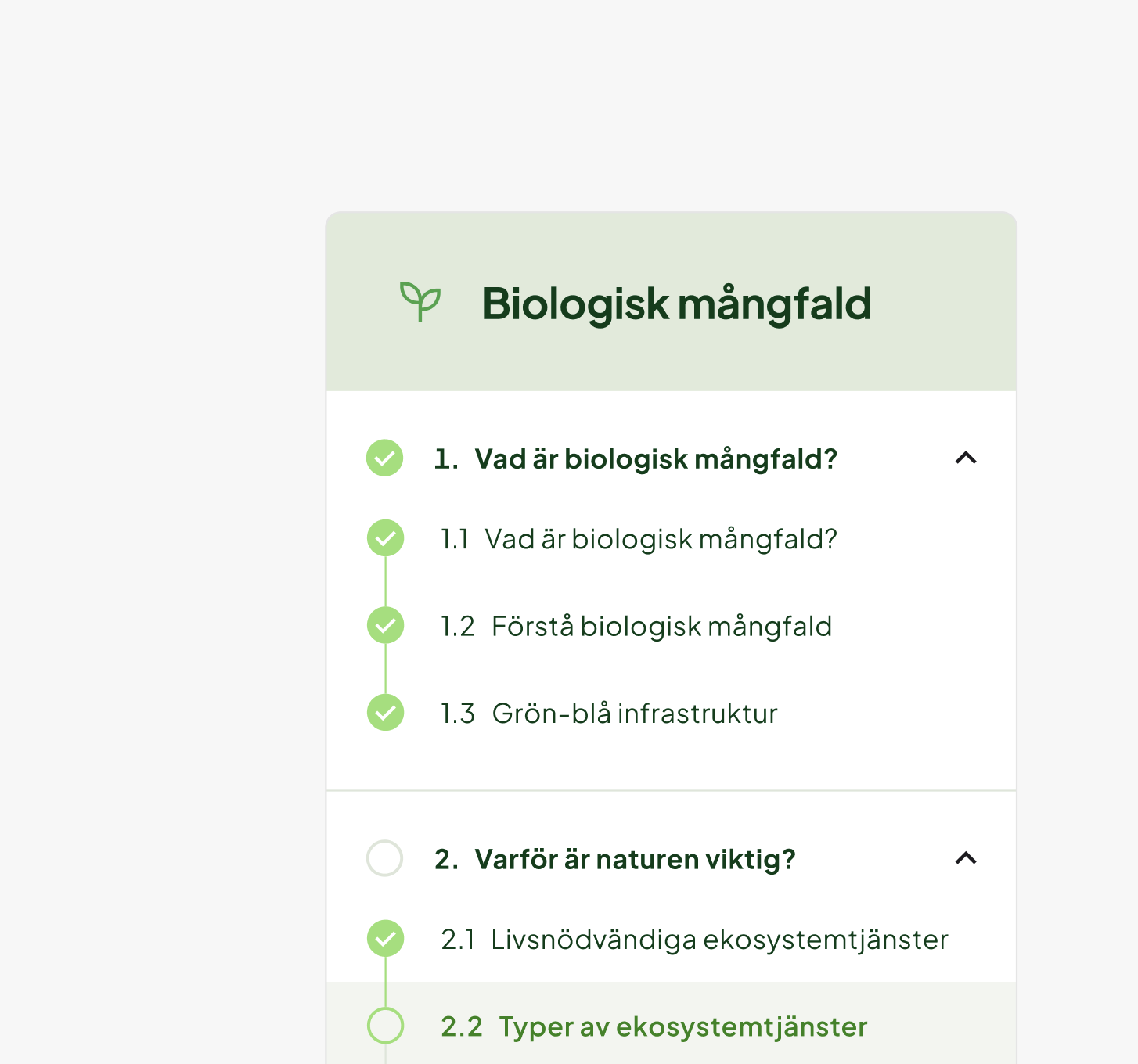
Understanding Biodiversity
Understanding why biodiversity is important requires knowledge of basic ecology, i.e. the interactions between organisms and the environment in which they live.
Food chain
In nature, plants and animals, including humans, are interdependent. This is illustrated in its simplest form by a food chain from a primary producer (a plant with photosynthesis) to consumers (usually animals) who in turn consume each other. For example; a moose eats grass and the moose is in turn eaten by a bear. Nutrients and energy are then moved up the food chain.
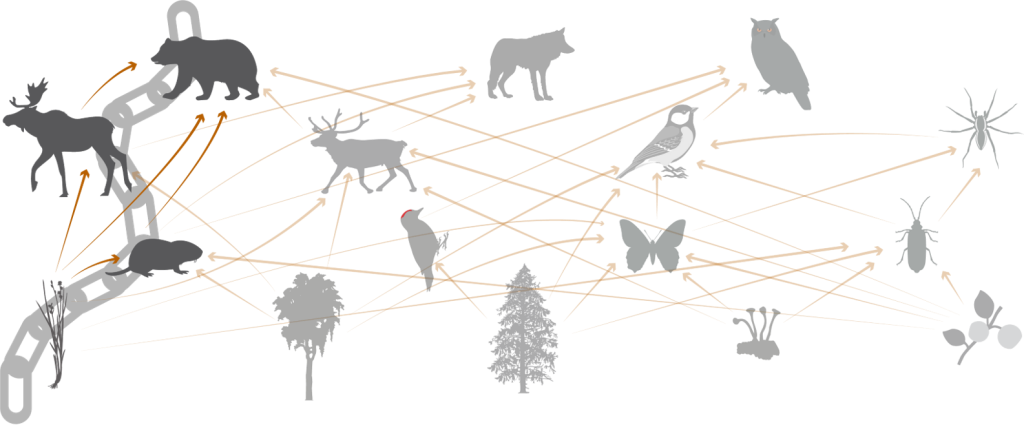
© Illustration by Ecogain AB
Food web
An ecosystem is made up of complex interactions between many different food chains to form a food web. The food web is also a simplified picture of ecosystem interactions, but it helps us better understand how different organisms depend on and affect each other. This is a fundamental piece of the puzzle for understanding why biodiversity is so important!
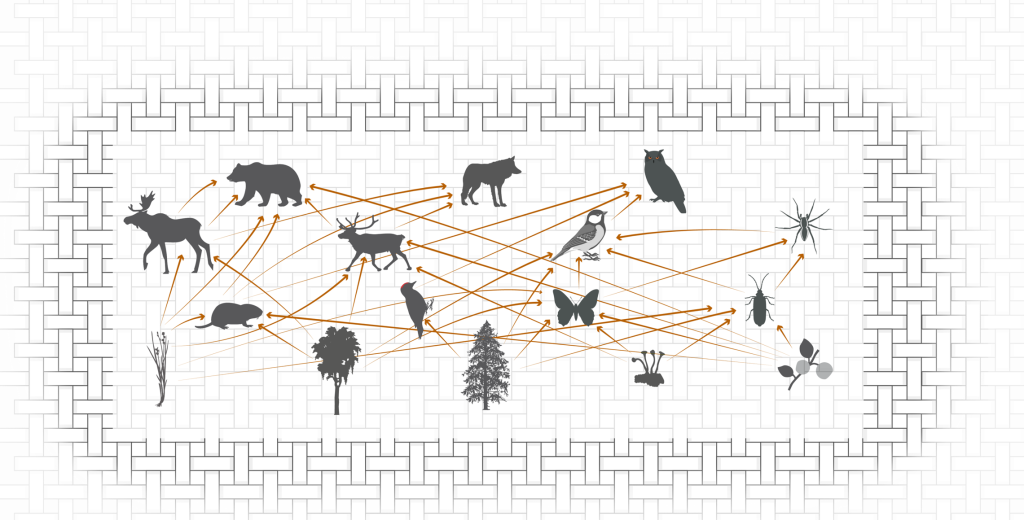
© Illustration by Ecogain AB
Decomposition and nutrient cycle
All living organisms build carbon and nutrients into their cells. Plants take up carbon from the atmosphere and nutrients from the soil, animals eat the plants. When organisms die, nutrients and carbon are released through decomposition.
Worms are examples of important decomposers that not only process dead organisms but also return nutrients to the soil. Nutrients and carbon thus circulate between the living and non-living parts of the ecosystem in a cycle.
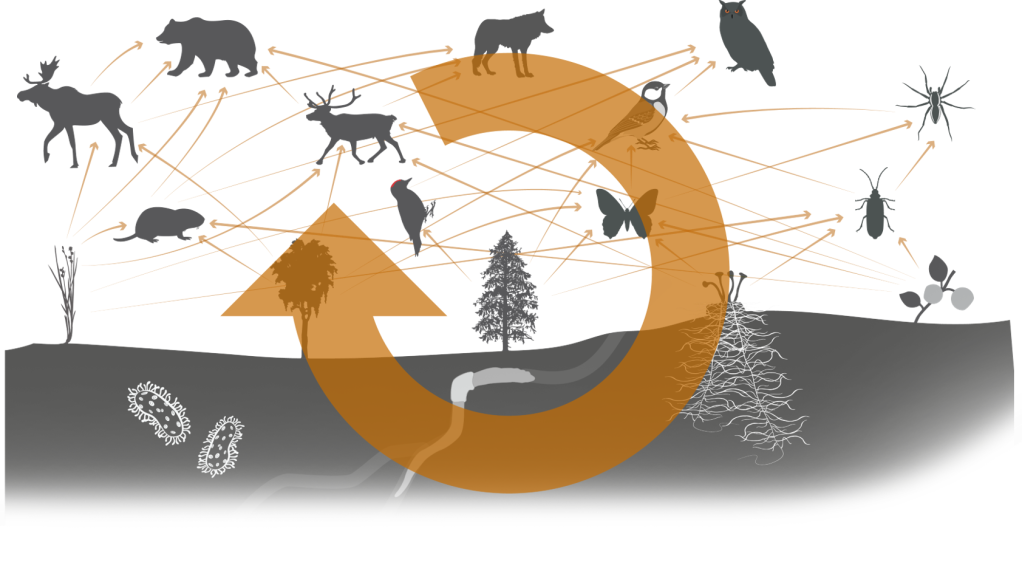
© Illustration by Ecogain AB
An ecosystem is thus built up by both complex interactions between many living organisms, but also by interactions between the living (biotic) and the non-living (abiotic) parts, such as soil and water. The abiotic part of the ecosystem provides the basic conditions for the species that make up the ecosystem.
